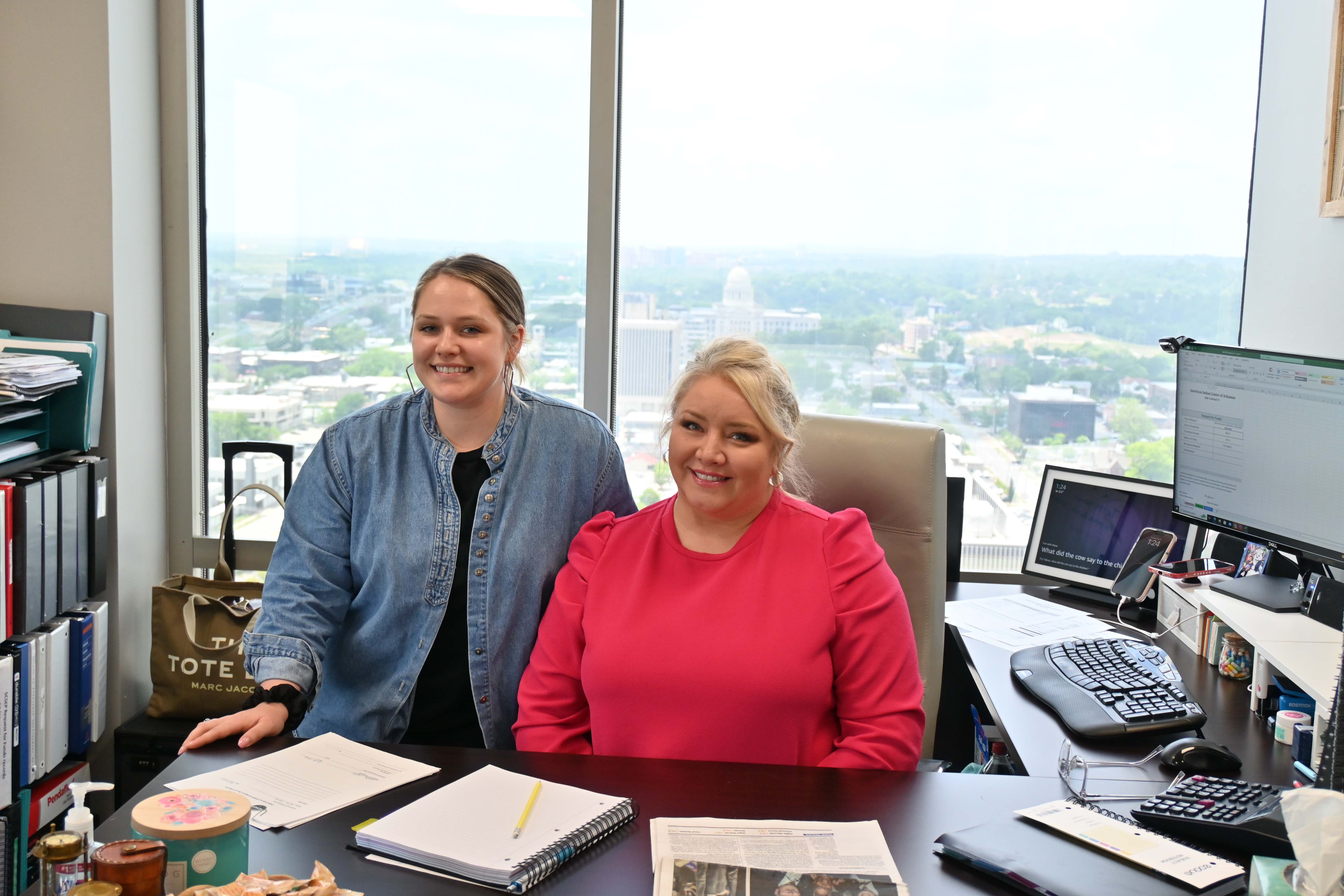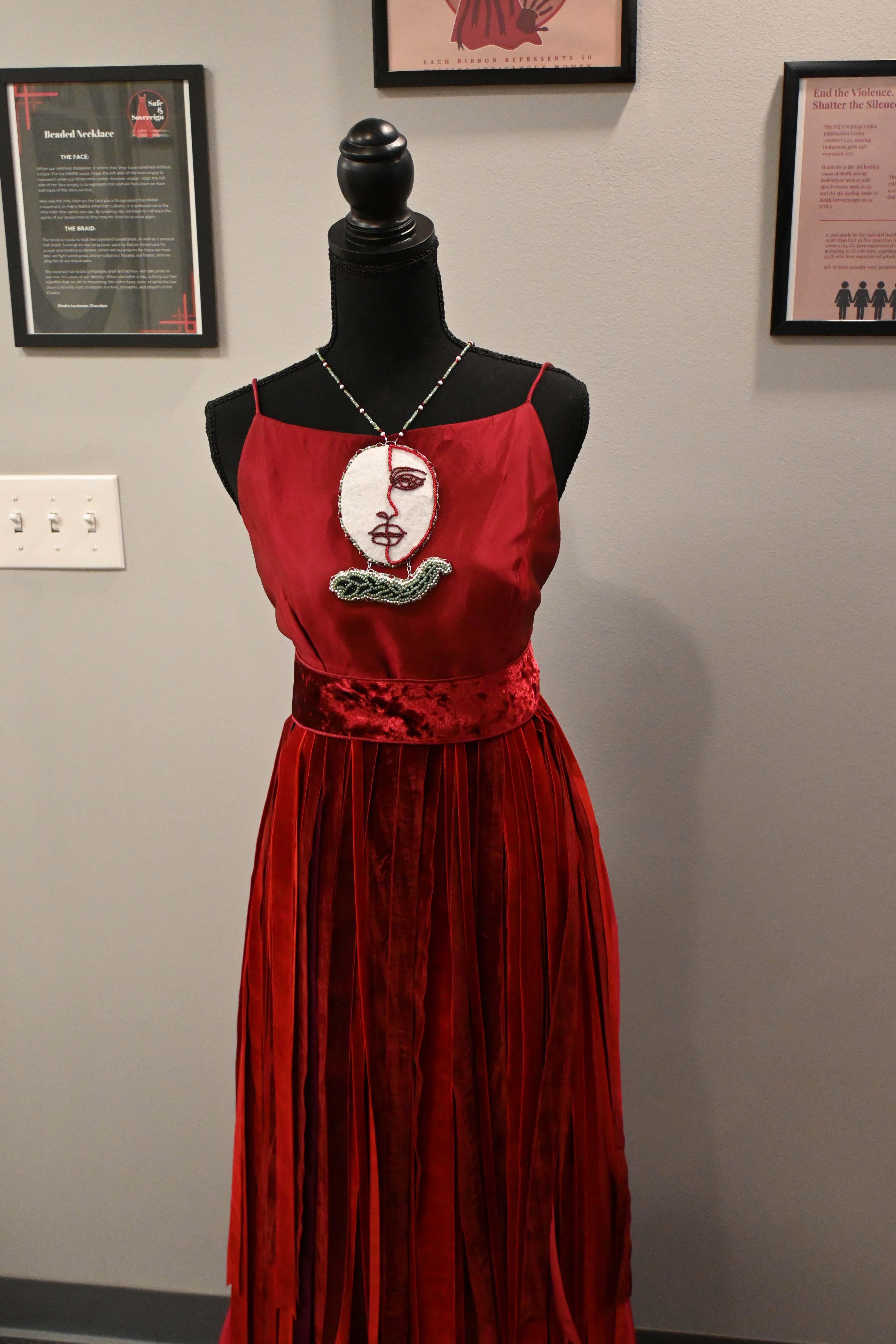American Indian Center of Arkansas
June 5-11, 2023
By Jay and Kathy Edwards
We were fortunate recently to sit down for a discussion with Star Jackson and Jewel Cunningham at the headquarters of the American Indian Center of Arkansas in downtown Little Rock. Star is the organization’s executive director and Jewel is the native connection director.
The purpose of the AICA is to aid American Indians/Native Americans with employment and training needs. They are funded through the Workforce Innovations and Opportunities Act.
Daily Record: We appreciate your time today ladies and the chance to tell our readers about your organization. How long has the Center been operating?
Star: It was formed as a non-profit in 1977. It all started with Dr. Daniel Littlefield of the Sequoyah National Research Center, who saw a need for these types of services and a way for the history to be told. Today, our board of directors is made up mostly of Native Americans, most of whom have been with us for over three decades. I have been here since 2014 and became executive director last October. We have a phenomenal staff of 13 full-time members. Each and every one of them I feal are hand-picked to be in the position they are in. You have to have a very special heart to be as diligent as they are. They are so caring and they give everything.
DR: When you took over last fall as executive director what were some of your goals?
Star: My ultimate goal is outreach, to let people know we are here and to educate them about the fantastic programs that are really helping people all over the state. We just want people to know that we have many resources available to them.
One is the ACE program, which stands for Accessing Choices in Education. It helps the Native American youth graduate by offering whatever they need to insure they graduate, from getting them school supplies to tutoring.
There is the Native Connections Program, which is a suicide prevention program that looks to help children to young adults who are dealing with mental and/or substance abuse issues get the support they need, like connecting them with mental health providers or developing intervention plans. We are now reaching out to the 988 call centers to make sure that they are culturally aware, and we have a very good director training the 988 call centers. This is so important.
Then we have the WIOA program the Workforce Innovations and Opportunities Act Program, which ensures anyone who wants a career has all the tools they need in order to achieve their goals. We offer them education assistance, job training and placement, through counseling, career workshops and referrals. We are looking for partnerships with companies in Arkansas to place our clients in.
We have our SCSEP program, Senior Community Service Employment Program. It is for people 55 and older. Some of them are retired and are just not making ends meet. It is for poverty-stricken communities. These people are absolutely in poverty. The guideline is that they can’t make over $13,000 a year. So how are they making it on that? We get into their lives and help them with any resources we can possibly find. A lot of them don’t want to touch computers. Every job you apply for now requires a computer. We give them education in computer literacy. We make sure they aren’t so withdrawn from their communities. A lot of times we are the only people who they talk to.
DR: Is SCSEP just for the Native seniors?
Star: No. It is for everyone.
DR: How do you reach those people?
Star: We are boots on the ground. We go out into the communities to the senior centers, the workforce centers. I have a crew right now in Pine Bluff at McDonald’s buying coffee for everybody over 55. Boots on the ground in the communities. We go and stand at Walmart. Anywhere we can find the senior community.
DR: Tell us about the recent art display, with the dress, at the State Capitol.
Jewel: The vision behind the dress was to honor the missing and murdered indigenous women, which is a social movement throughout the US and Canada. Current reports say there are about 5,712 missing and murdered indigenous women, so we created the dress with ribbon which is used in traditional regalia. So, each ribbon on the dress represents 50 or so indigenous women. That is the vision behind the dress. We created it to spread awareness in the community. Because there are a lot of people who don’t even know there are native people in Arkansas. The murders and disappearances of indigenous women is obviously a big issue in the community. Cases aren’t taken seriously by the police. There is stigma and stereotyping. When cases are reported, the victims are often brushed off as being either promiscuous or drinkers.
DR: So, law enforcement may not give it a lot of time?
Jewel: Right. Another issue is the reporting process is so limited. There is not an accurate statistic or number available for all the reports to be accumulated, to have accurate representation to show the actual need for services in reporting.
DR: Are you referring to the media?
Jewel: I’m mainly talking about data collection services. There are data collection services, but we are advocating for more of an indigenous focus. The tribes don’t have reporting systems to report to the state, who then doesn’t have a way to report it federally. We’re advocating for a smoother process and more policy for native women. That is what the movement is.
DR: Does it become a problem with jurisdiction? A reservation is federal, correct?
Jewel: If the crime is on a reservation the tribe are the initial investigators. But a lot of times they will bring in local authorities. They do collaborate with local law enforcement. That is another thing that is being pushed for in legislation, the jurisdictional issue. Because in the past people who are non-native couldn’t be convicted through a tribal court so it goes to the state or local level where it is brushed off because it happened on tribal land. How can you convict somebody in local or state court when it is on tribal land? Some of that was fixed through the Violence Against Women’s Act.
Star: Back to the data collection. We had a case right here in Arkansas where a Native American man was murdered and when the report was taken, they classified him as Hispanic. So, the data collection was wrong. If you are brown skinned, you get placed in a box.
Jewel: Now it is becoming Missing and Murdered Indigenous People because men are also missing and being murdered or inaccurately represented and reported. Of the Native Americans in the US, 70% live in urban communities. Only 30-40% live on reservations.
Star: There are grants available urging the Native American community to get away from their tribes. They say that the tribal community is holding them down. They want to move them into urban areas.
Jewel: I don’t know if I agree with that. It reminds me of boarding school. Taking the Indian children out, educating them and convincing them they will go back. But really, they probably aren’t going to go back.
Star: Instead of trying to make the tribes better they are pulling them away from their community.
Jewel: Right. Culture is a protective factor. It can keep individuals from going down the wrong path.
Star: Culture is so important in the native community. For us not to focus on that portion of it is just wrong.
DR: You mentioned grants. Do you depend on them for your resources?
Star: We are fully grant funded. So, it is a challenge. A big challenge. In the past there hasn’t been a priority on outreach to the communities. That is something we are focused on changing. It will hopefully get us more donors and just support in general. A big part of this will come from our support of other nonprofits. We want to help them and want them to help us as well.
We want to keep growing. I have a larger plan. A larger goal for the organization. We want to bring as much culture in as possible. Like Jewel said it is the foundation of families and there are so many Native Americans who are not even counted because the culture is not in Arkansas. For instance, in the census, if the head of the household is white everyone in the household is going to be white. If the head is Native American, the whole household is Native American. They only count the one race for the household. We have been encouraging our participants when the census comes around again, if they are Native, to put that for the head of household.
DR: Thank you ladies. We will do what we can to help get the word out.
Photo Caption:
1. Star Jackson (right) and Jewel Cunningham of the American Indian Center of Arkansas (Jay Edwards)




